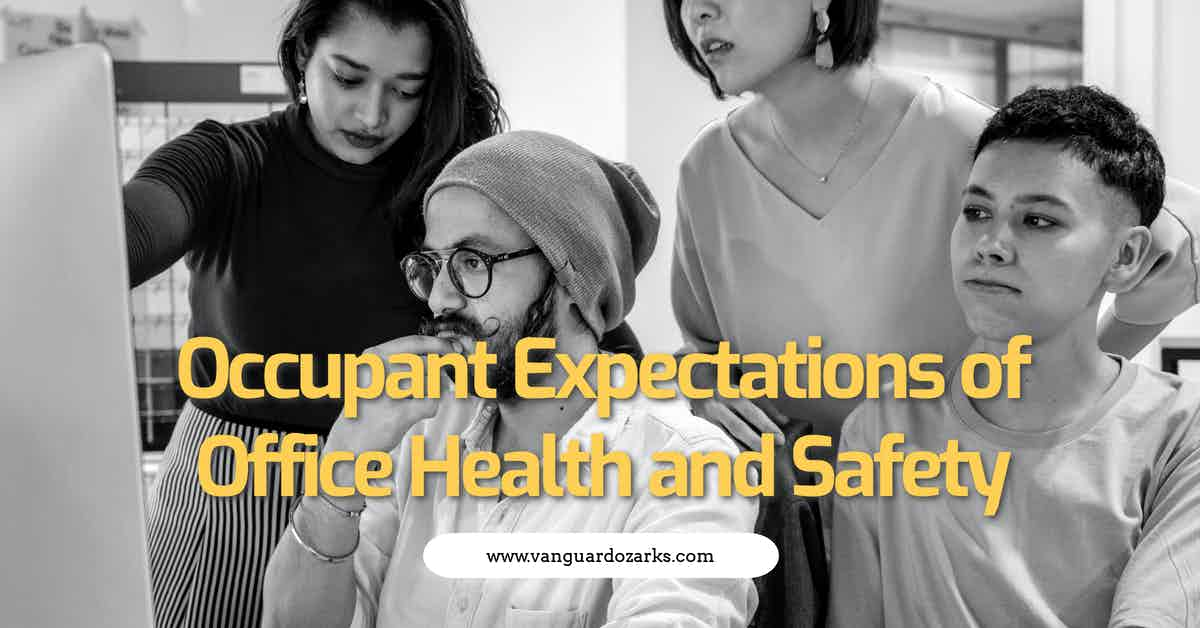Occupant expectations of public facility health and safety standards have increased dramatically since the start of the COVID-19 pandemic, underscoring the importance of continuous enhanced cleaning and targeted infection prevention strategies.

Workers Concerned About Workplace Health & Safety
Post-COVID, workers are noticeably and understandably preoccupied with their employer's facility hygiene focus.
A survey of 1,000 U.S. office workers was recently conducted by Lysol Pro Solutions to ascertain workforce concerns.
According to the results:
- 32% of respondents felt confident in their company's health and safety measures.
- 29% stated they felt pressured by their employer to come into the office when ill.
- 47% of respondents admitted they themselves don't follow current hygiene recommendations.
- 87% stated they feel anxious about meeting with multiple people in a confined indoor space.
- 28% said they avoid communal areas in public facilities.
- 30% said they are more concerned now about getting a cold or the flu than they were prior to COVID.
- 43% feel their workplace hygiene protocols could be more effectively enforced.
- Only 25% stated their office was cleaned and disinfected multiple times per day, and;
- 58% expect their employer to provide self-service infection prevention tools, such as disinfectant wipes and hand sanitizer.
Further, according to the latest CMM In-House/Facility Management Benchmarking Survey Report;
Even before the pandemic, “health and safety” ranked highest when FMs were asked to rate the most important issues affecting their operations.
This year, 80% of respondents said health and safety was important “to a large extent.”
Improving facility image, improving productivity/efficiencies, training and education of staff, and security rounded out the top five most important concerns.
2022 In-House/Facility Management Benchmarking Survey Report
Consumers Concerned With Dirty Restrooms and Carpets
While workforce concerns tend to align with day-to-day operations and facility safety, consumers are also hyper-focused on restroom and carpet cleanliness.
The logic is that a visibly dirty or bad-smelling facility indicates bad management and foreshadows a poor buyer experience.
According to a survey conducted by the Bradley Corporation:
- 63% of respondents recalled an unpleasant experience in a public restroom due to facility cleanliness--up from 51% the year prior.
- 73% stated a bad restroom indicates poor management.
- 66% said a gross restroom diminished their view of a business, demonstrates the business doesn't care about its customers, and leaves an impression the company is lazy and sloppy, and;
- 64% said they’d either think twice about patronizing the business or will never frequent it again if they encounter a dirty or smelly restroom in a business.
Among the top consumer restroom complaints:
- 82% said bad smells.
- 79% said clogged or unflushed toilets, and;
- 73% cited a general dingy appearance.
In regards to facility carpet cleanliness, a recent Harris Poll found that:
- 93% of respondents stated that a visibly dirty carpet--stains, animal hair, or food residue--would diminish their opinion of the business.
- 80% said a dirty carpet would negatively impact their view of a hotel.
- 72% stated they would think poorly of a long-term care facility with dirty carpets.
- 70% said dirty carpets in the public area of apartments and condos would adversely impact their views of the facility and the management.
- 66% cited negative feelings towards retail locations with dirty carpets.
- 64% were turned off by office buildings with dirty carpets, and;
- 58% said dirty carpets in schools and universities left respondents with a negative impression.
When encountering a dirty carpet:
- 58% of respondents said they assume the whole facility is dirty.
- 56% would look for an alternative business.
- 50% said they spend less time in the facility, meaning they spend less money, and;
- 47% said they would complain to friends, family, or co-workers about the lack of facility cleanliness.
References & Resources
- Reckitt Survey Finds Workers Concerned About Workplace Health & Safety
- Most Americans Say Facilities Lose Credibility With Dirty Carpet
Takeaway
Both consumers and office workers are increasingly concerned with public facility safety and hygiene, though they appear to have slightly different focal points and methods for gauging management commitment.
In both instances, the solution is to employ:
- Daily enhanced facility cleaning with modern products and technologies.
- Ongoing targeted fomite disinfection throughout the day.
- Day porter services for communal areas and restrooms in high-traffic and high-occupancy facilities.
- Ongoing surface and air testing to ensure program efficacy, and;
- Transparent communication between service providers and stakeholders.
Implementing the requisite labor and material resources will likely prove cost-prohibitive for many organizations.
Outsourcing is a proven method for onboarding skilled service providers equipped with the latest training, processes, and technologies for a fraction of the price of maintaining a comparable service in-house.
Contact us today and discover why Vanguard Cleaning Systems® is the Standard of Clean® for businesses throughout Northwest Arkansas, Missouri, and Oklahoma.
In Oklahoma, dial 918-960-4450
In Arkansas, dial 479-717-2410
In Missouri, dial 417-812-9777

